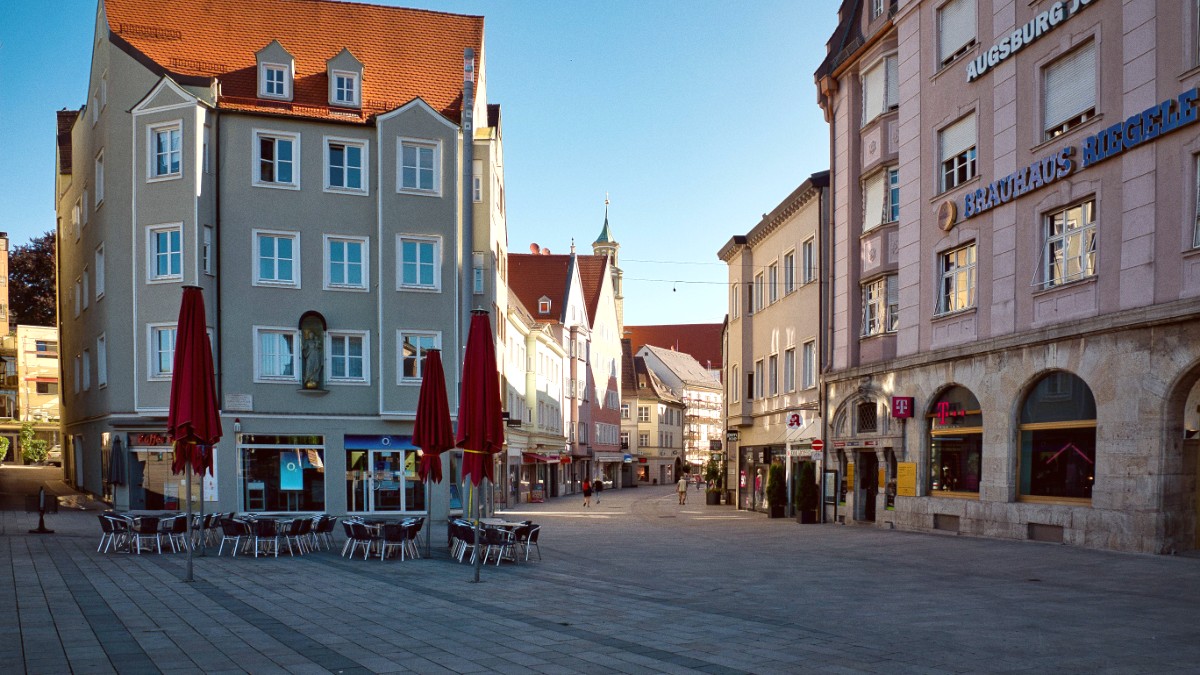
Bavaria, Germany
The Fuggerei is the world's oldest social housing complex, established in 1516 by Jakob Fugger "the Rich." This remarkable institution continues to render affordable housing for needy Catholic citizens of Augsburg, who pray daily for the Fugger family. It serves as a living historical testament to early social welfare initiatives and philanthropy.
The complex consists of narrow streets, small houses, and charming courtyards, giving a glimpse into centuries-old community life.
The cathedral opens daily for visitors, offering free admission (donations are welcome). Access to certain areas may restrict during religious ceremonies.
This impressive late Gothic church dominates Augsburg's skyline with its towering spires.
It is renowned for its magnificent Renaissance altars, baroque chapels, and the crypts containing the tombs of St. Afra and St. Ulrich, two of Augsburg's patron saints.
The church showcases artistic and architectural styles spanning several centuries, marking it as a significant historical site.
Augsburg’s museums and cultural institutions reveal its diverse history, art, and industrial heritage.
This interactive museum presents a journey into the lives and global trade networks of the Fugger and Welser families, Augsburg's two most powerful merchant dynasties during the Renaissance. Multimedia exhibits and historical artifacts detail their influence.
This house marks the birthplace of Leopold Mozart, Wolfgang Amadeus Mozart's father. The museum explores the Mozart family's musical heritage and their strong connection to Augsburg. You can view historical instruments and understand Leopold's influence.
Housed in a restored former spinning mill, the tim museum showcases Augsburg's rich textile history and industrial heritage. Augsburg was a major textile center, and this museum details the industry's evolution. It features working machinery and fashion exhibits.
Augsburg's city museum, the Maximilianmuseum, features a collection of art, cultural history, and archaeological finds from the city and region. It includes impressive sculptures, gold and silver work, and Renaissance craftsmanship unique to Augsburg.
An opulent Rococo palace, the Schaezlerpalais houses the German Baroque Gallery, the State Gallery (with German masters' works), and European art. The palace itself is a work of art, with a grand ballroom. Exhibits from the Roman Museum are temporarily displayed in the Zeughaus.
Wander through cobblestone streets, discover hidden courtyards, and admire centuries-old buildings. The area around Rathausplatz and Maximilianstraße offers a rich historical atmosphere.
Explore the remains of Augsburg's medieval city fortifications. Sections of the old city walls and several towers, like the Fünfgratturm, convey a sense of the city's former defenses.
A magnificent Art Nouveau synagogue, rebuilt after WWII. It functions as an active place of worship and houses a Jewish cultural museum. Its striking architecture and powerful history make it a meaningful site.
Augsburg's long history contains numerous historical sites, offering glimpses into its Roman, medieval, and Renaissance past.
Augsburg presents green spaces and natural beauty for relaxation and recreation, contrasting with its historic urban core.
A beautiful and diverse garden, featuring themed sections including a Japanese garden, a rose garden, and various greenhouses. It displays a wide array of plant species and a tranquil escape within the city.
Directly south of Augsburg, the Siebentischwald is a large, protected forest area. It serves as a popular spot for walking, jogging, and cycling on its well-maintained paths. This forest plays a role in Augsburg's water supply system.
The rivers themselves and their surrounding floodplains offer pleasant walking and cycling paths. These areas present natural beauty, opportunities for birdwatching, and a peaceful environment for outdoor activity. Stempflesee is a picturesque lake within the Siebentischwald, popular for picnics and strolls.
This charming square, named after the city’s famous Renaissance architect, often remains overlooked. It is a pleasant, quiet space to relax and appreciate surrounding historic buildings.
A beautiful historic building complex with a lovely inner courtyard, near the Fuggerei. This former hospital offers a peaceful ambiance and impressive architecture, often a quiet respite.
A small, picturesque pond within the Wittelsbacher Park. In summer, you can rent rowboats here, a favorite local activity for a relaxing afternoon on the water. It presents a peaceful retreat.
Many visitors ascend only to the magnificent Golden Hall in the Town Hall. Take time to explore the lower floors of the Rathaus, which contain other interesting historical rooms and exhibits, often with fewer crowds.
While the "Augsburger Puppenkiste" (marionette theater) is famous, its small museum, "Die Kiste," offers a nostalgic and charming look at the beloved puppets and their history. It delivers a delightful experience for both children and adults.
The city's past as a Roman settlement and a powerful medieval trading hub is visible throughout its streets and buildings.
Beyond the major landmarks, small churches, and historical plaques throughout the city reveal layers of Augsburg's story.
Many of Augsburg's historical buildings are best appreciated on foot. Wear comfortable shoes and allow yourself to wander off the main streets.
This allows discovery of hidden courtyards and architectural details not visible from the main routes.